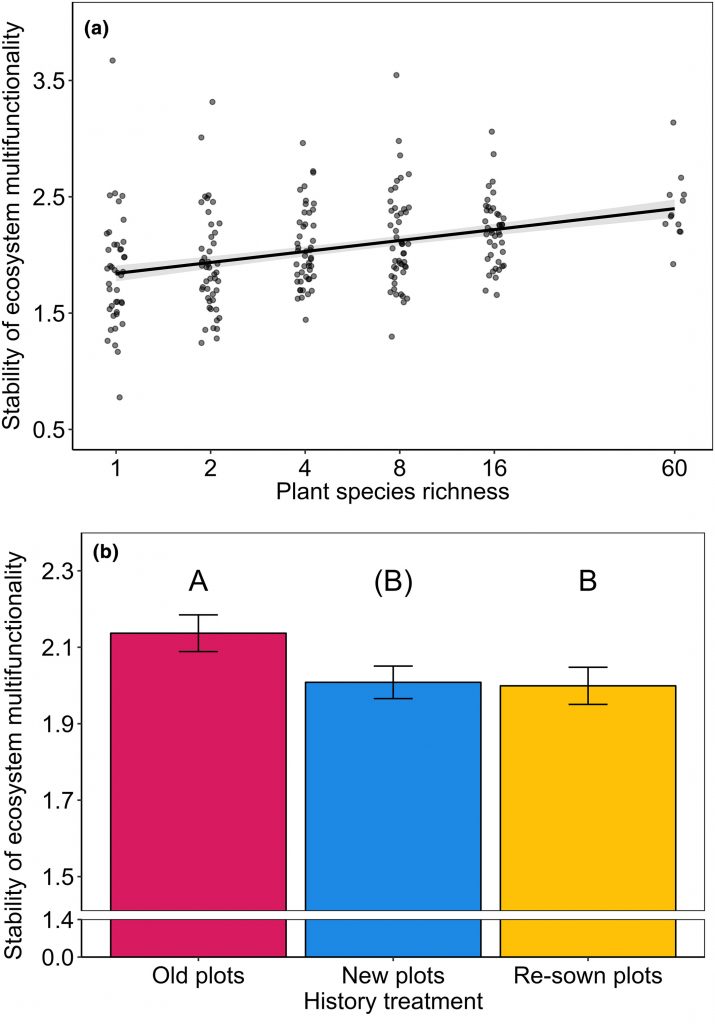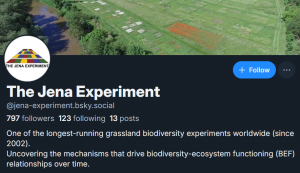New publication from Dietrich et al. in Global Change Biology: Plant diversity and community age stabilize ecosystem multifunctionality
It is well known that biodiversity positively affects ecosystem functioning, leading to enhanced ecosystem stability. However, this knowledge is mainly based on analyses using single ecosystem functions, while studies focusing on the stability of ecosystem multifunctionality (EMF) are rare. Taking advantage of a long-term grassland biodiversity experiment, we studied the effect of plant diversity (1–60 species) on EMF over 5 years, its temporal stability, as well as multifunctional resistance and resilience to a 2-year drought event. Using split-plot treatments, we further tested whether a shared history of plants and soil influences the studied relationships. We calculated EMF based on functions related to plants and higher-trophic levels. Plant diversity enhanced EMF in all studied years, and this effect strengthened over the study period. Moreover, plant diversity increased the temporal stability of EMF and fostered resistance to reoccurring drought events. Old plant communities with shared plant and soil history showed a stronger plant diversity–multifunctionality relationship and higher temporal stability of EMF than younger communities without shared histories. Our results highlight the importance of old and biodiverse plant communities for EMF and its stability to extreme climate events in a world increasingly threatened by global change.

Reference:
Dietrich, P., A. Ebeling, S. T. Meyer, A. E. B. Asato, M. Bröcher, et al. 2024. Plant diversity and community age stabilize ecosystem multifunctionality. Global Change Biology 30:e17225. https://doi.org/10.1111/gcb.17225.



